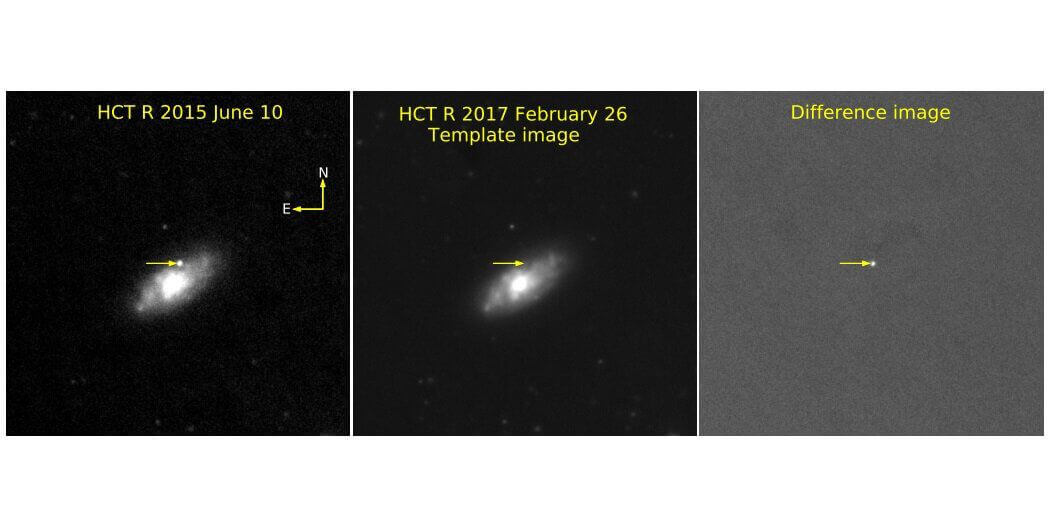A new study by astronomers revealed important properties of a type Ib supernova, called MASTER OT J120451.50 + 265946.6, which exploded in the galaxy NGC 4080. This study provides valuable information about the nature of this supernova, which can help determine the class of a possible predecessor star.
Supernovae are powerful stellar explosions, which in the initial classification are divided into type I and II supernovae, depending on the type of their light curves and the nature of the spectra. Type I supernovae are divided into three subclasses: Ia, Ib, and Ic. Supernovae of types Ia and Ib are associated with the collapse of massive stars, and in the case of type Ib supernovae, their early spectra usually show a general lack of hydrogen and characteristic helium peaks.
The supernova MASTER OT J120451.50 + 265946.6 (or M12045, for short) was discovered on October 28, 2014 using the MASTER-Tunka automatic detection system as an optical transient. Subsequently, this short-term flash was classified as a Type I supernova, which erupted in the NGC 4080 Magellanic Spiral Galaxy located approximately 50 million light-years from Earth.
For a deeper understanding of the origin of the supernova M12045 in a new study, a team of astronomers led by Mridwiki Singh from the Aryabhatta Research Institute of Observational Sciences (ARIES), India, analyzed the available photometric and spectroscopic observations of this supernova obtained using two Indian telescopes , The 104-centimeter telescope Sampurnanand Telescope (ST) and the 201-centimeter Himalayan Chandra Telescope (HCT), for 250 days after reaching the supernova maximum brightness.
The study confirmed that the supernova M12045 is an ordinary type Ib supernova. In addition, the researchers calculated that the mass of oxygen emitted into space during this stellar explosion was approximately 90 solar masses.
According to the paper, in general, these results support the hypothesis that the star that gave rise to this explosion, most likely, was a Wolf-Rayet star. In this case, such a star, while on the main sequence, could have a mass of approximately 20 solar masses, the authors explained.
Type Ib supernova that flared up in the galaxy NGC 4080
Click To Tweet
The post Type Ib supernova that flared up in the galaxy NGC 4080 appeared first on Upcosmos.com.
